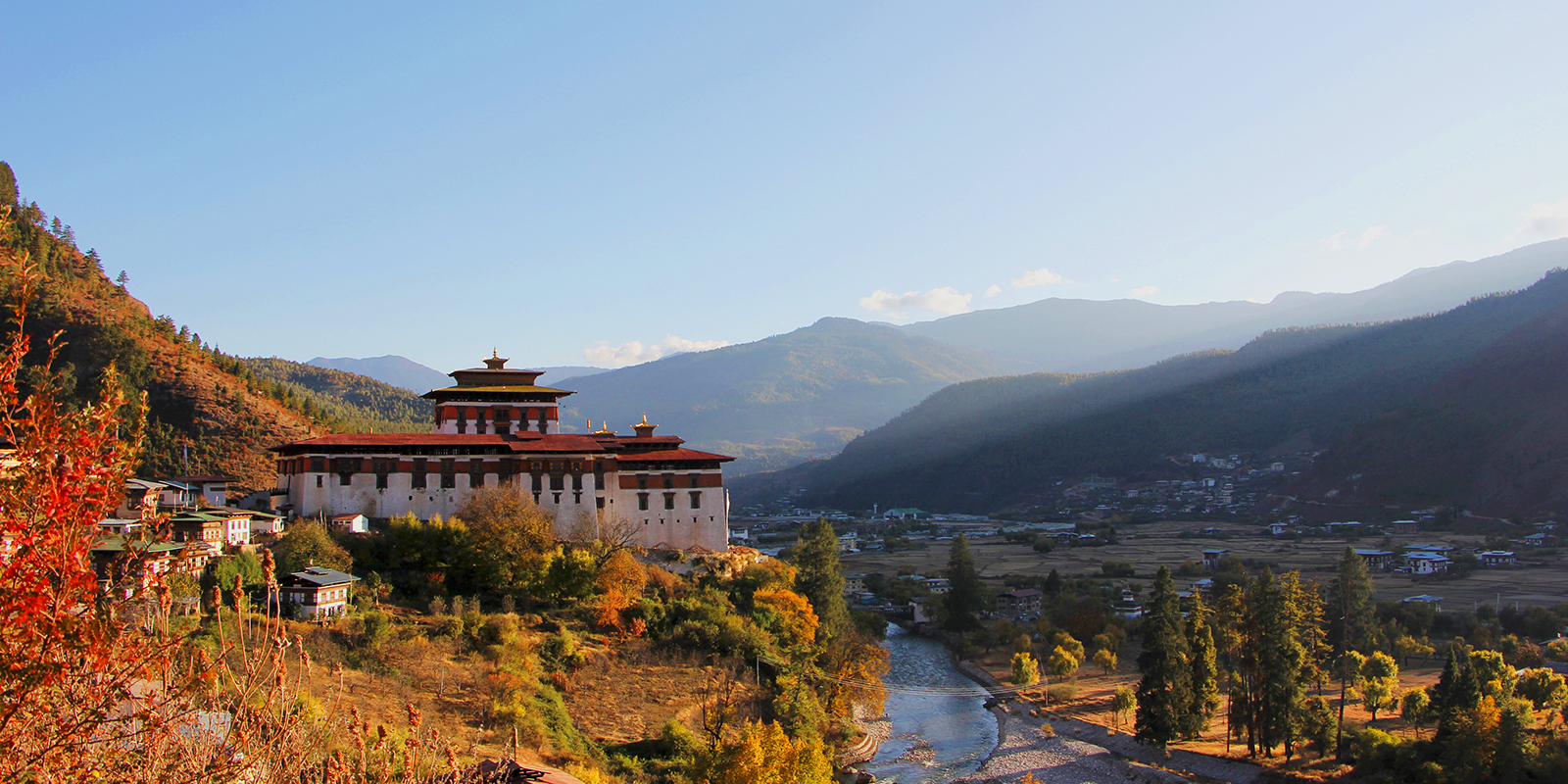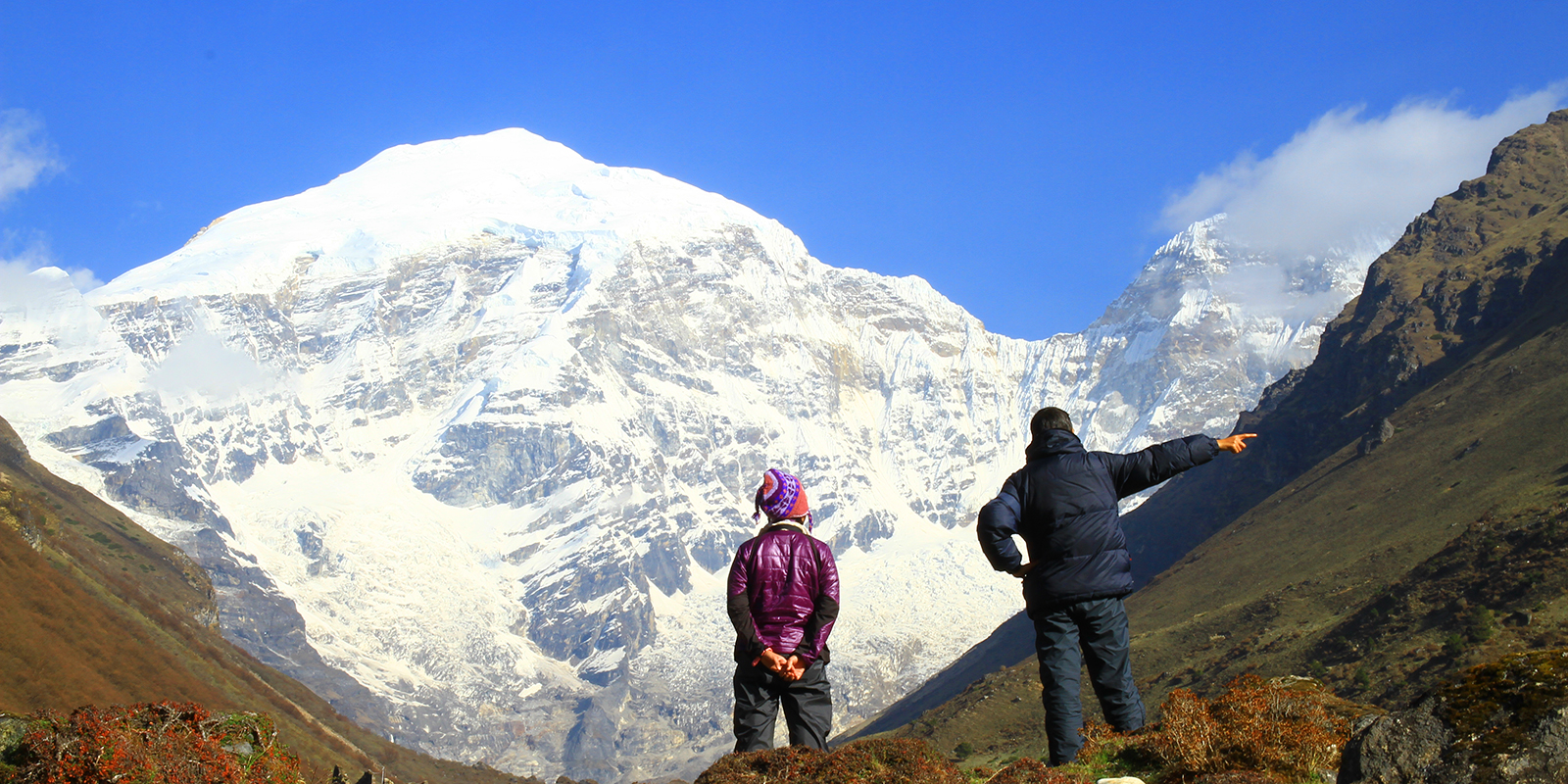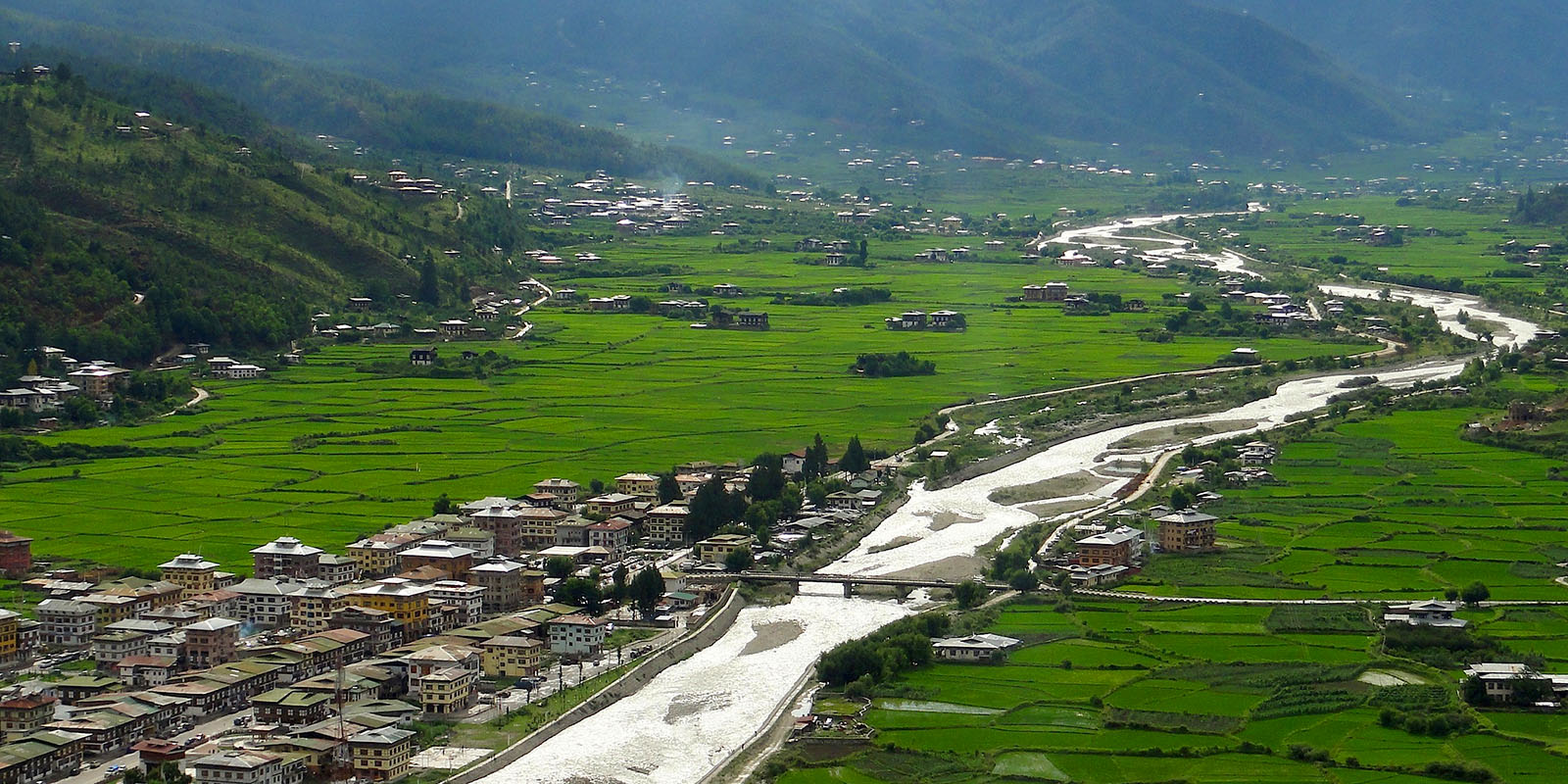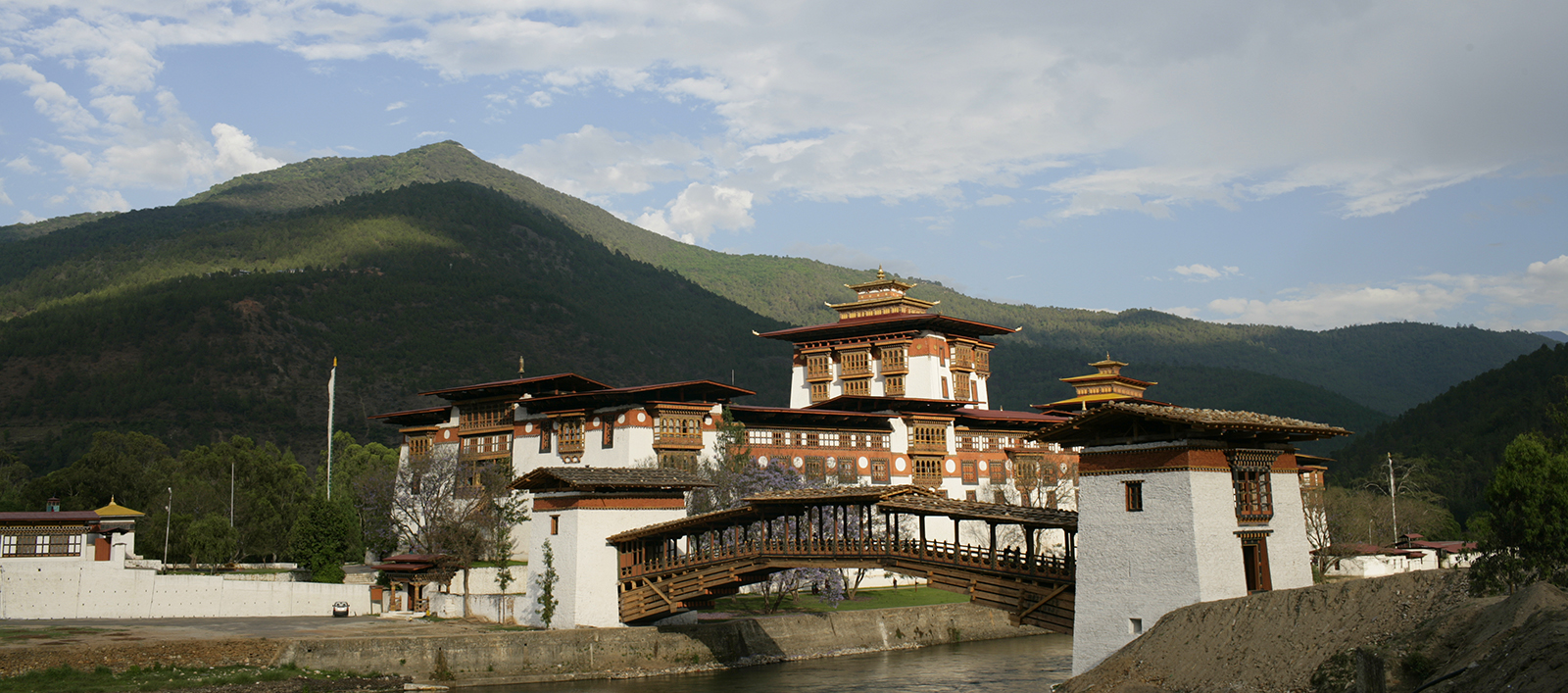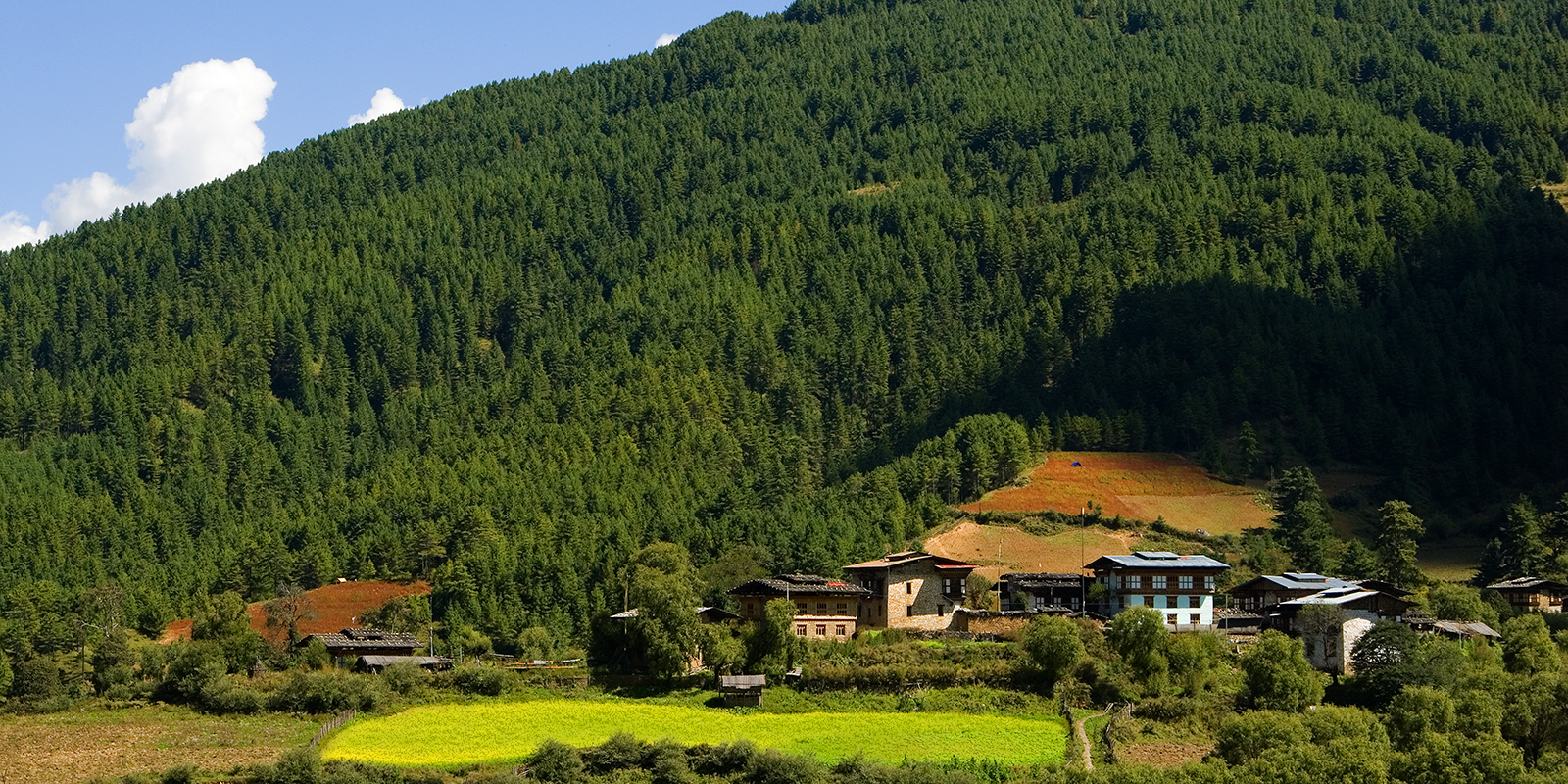
DAY 01: ARRIVE AT PARO, PARO – THIMPHU
The flight into Bhutan takes you close to the great Himalayas , offering dazzling scenic views of some of world’s highest glacial peaks. As you enter Paro valley, you will sweep past forested hills with the silvery Pa Chu (Paro river) meandering down the valley below. Paro Dzong (fortress) and Ta Dzong (watchtower) on the hills above the town will be a fine sight. Our Bhutan Safari representative will meet you at Paro airport, and after completion of arrival formalities you will be transferred to Bhutan ’s capital, Thimphu , an exciting blend of tradition and modernity.
Dinner and overnight at your hotel in Thimphu .
DAY 02: THIMPHU
Today’s full day of sightseeing in Thimphu valley includes visits to: * National Library, which holds a vast collection of Buddhist texts and manuscripts, some dating back several hundred years, as well as modern academic books mainly on Himalayan culture and religion; * Institute for Zorig Chusum (commonly known as the Painting School) where students undertake a six-year course on the 13 traditional arts and crafts of Bhutan; * National Institute of Traditional Medicine (outside only), where the medicinal herbs abundant in the kingdom are compounded and dispensed, and traditional medical practitioners are trained; * National Memorial Chorten: The building of this landmark was envisaged by the third king, His Majesty Jigme Dorji Wangchuck, as a monument to world peace and prosperity. Completed in 1974 after his untimely death, it is both a memorial to the Late King (”the father of modern Bhutan “) and a monument to world peace. The paintings and statues inside the monument provide a deep insight into Buddhist philosophy; * Tashichhodzong: This impressive fortress/monastery houses the secretariat building, the throne room of His Majesty, the King and various government offices. It is also the summer residence of the Chief Abbot and central monk body; * Folk Heritage and National Textile Museums : These museums, both of which opened in 2001, provide fascinating insights into Bhutanese material culture and way of life. * Handicrafts Emporium: This government-run enterprise displays a wide range of beautifully hand-woven textiles and craft products. It also carries a small collection of books on Bhutan , Buddhism and Himalayan culture.
Dinner and overnight at the hotel in Thimphu .
DAY 03: THIMPHU – TONGSA
After early breakfast, drive up to Dochu-la pass (3,088m/10,130ft) stopping briefly here to take in the view and admire the chorten, mani wall, and prayer flags which decorate the highest point on the road. If skies are clear, the high Himalayan peaks towards the north east will be revealed in all their glory. On a clear day, the following peaks can be seen from this pass (left to right): Masagang (7,158m), Tsendegang (6,960m), Terigang (7,060m), Jejegangphugang (7,158m), Kangphugang (7,170m), Zongaphugang (7,060m) a table mountain that dominates the isolated region of Lunana, and finally, Gangkar Puensum, the highest peak in Bhutan at 7,497m.
Then continue onwards, reaching Wangduephodrang town in time for lunch. From here, it is a long, winding descent into the Wangduephodrang valley, which is about 1,700m below the pass. Take lunch at Wangduephodrang town, then continue on to Tongsa across Pele-la pass (3,300m/10,830ft), the traditional boundary between east and west. The pass is marked by a large white chorten and prayer flags. There is an abrupt change in vegetation at this point, with mountain forest replaced by high altitude dwarf bamboo.
Stop en route at Chendebji Chorten, patterned on Kathmandu ’s Swayambhunath Stupa, with eyes painted at the four cardinal points. It was built in the 18th century by Lama Shida from Tibet , to cover the remains of an evil spirit that was subdued at this spot.
Arrive at Tongsa late afternoon and check into the lodge for the night.
DAY 04: TONGSA – BUMTHANG
After breakfast, walk by Tongsa Dzong (built by Shabdrung Ngawang Namgyal in 1647) and climb up a steep path to visit the Ta Dzong (watchtower), dedicated to the epic hero, King Gesar of Ling.
Then drive to Bumthang, 68 km. from Tongsa, a journey of about 3 hours, over the Yutong-la pass (3,400m/11,155ft). The road winds steeply up to the pass, 28 km. from Tongsa, then runs down through coniferous forest into a wide, open, cultivated valley known as the Chumey valley.
On arrival in Bumthang, check in at your lodge. After lunch, visit Kurje Lhakhang (”where the saint’s body is imprinted on a rock”), Jambey Lhakhang (7th century), Tamshing Monastery (housing some of the oldest wall paintings in Bhutan ), and Jakar Dzong (administrative center of the region). Stroll in the village, visit the little handicrafts shop at the entrance to the town, and perhaps take refreshments at a local restaurant. Dinner and overnight at the lodge.
DAY 05: BUMTHANG – PUNAKHA
After breakfast, explore further the fascinating valley of Bumthang . Then proceed to Punakha, stopping along the way at Tongsa for lunch, which will be served in a local restaurant famous for its cuisine.
Visit Wangduephodrang Dzong and town en route to Punakha, which we will reach late afternoon. Dinner and overnight at the hotel in Punakha.
DAY 06: PUNAKHA – PARO
Morning visit to Punakha Dzong, a massive structure built at the junction of two rivers. Punakha was Bhutan ’s capital until 1955, and Punakha Dzong still serves as the winter residence of the central monk body. Bhutan ’s first king, Ugyen Wangchuck, was crowned here in 1907. The fortress has withstood damage from fire, earthquake and flood over the centuries. The latest flood, in October, 1994, caused great damage to the fortress but miraculously spared its most holy statue.
After lunch, proceed to Paro, en route visiting a traditional Bhutanese farm house, to gain an insight into the lifestyle and culture of the local people.
On arrival in Paro, check into the hotel. Dinner and overnight at the hotel.
DAY 06: PARO
Today’s full day of sightseeing in Paro valley includes morning visits to Ta Dzong, which in the past served as watchtower for Paro Dzong and now houses the National Museum, and Paro Dzong (Rinpung Dzong), built in 1646 by Shabdrung Ngawang Namgyal.
After lunch, we drive up the valley to Drukgyel Dzong, built in 1647 by the Shabdrung to commemorate the Bhutanese victory over the Tibetans in the war of 1644. En route, we also visit Kyichu Lhakhang, built in the 7th century by the Tibetan king, Songtsen Gampo.
Dinner and overnight at the hotel in Paro.
DAY 07: DEPART PARO
After early breakfast in the hotel, drive to the airport for flight to onward destination.
